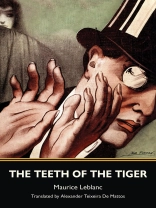In one of Maurice Leblanc’s most ornately constructed and beguiling tales, master of disguise and gentleman-burglar Arsène Lupin transforms both himself and (among those in the know) his reputation as a charming but incorrigible rake. When the heirs to a large fortune keep turning up dead under suspicious circumstances, Lupin is obliged by duty to pursue a baffling array of clues. Can he escape conviction for murder and exonerate the innocent people that only he can save from false punishment and psychic turmoil? Can he rescue the woman who has captivated his heart and mind from a seemingly inexorable and hideous fate? In this sweeping, engrossing tale rife with twists and turns, Lupin shows a hitherto seldom seen vulnerability, along with his legendary charisma, brio, wit, and good cheer. Lupin has been depicted in countless film and stage adaptions, most recently as the inspiration of the Netflix series, Lupin, starring Omar Sy. This Warbler Classics edition includes a detailed chronology of Leblanc’s life and work.
Содержание
Contents
I D’Artagnan, Porthos…and Monte Cristo
II A Man Dead
III A Man Doomed
IV The Clouded Turquoise
V The Iron Curtain
VI The Man with the Ebony Walking-Stick
VII Shakespeare’s Works, Volume VIII
VIII The Devil’s Post-Office
IX Lupin’s Anger
X Gaston Sauverand Explains
XI Routed
XII ‘Help!’
XIII The Explosion
XIV The ‘Hater’
XV The Heir to the Hundred Millions
XVI Weber Takes His Revenge
XVII Open Sesame!
XVIII Arsène I Emperor of Mauretania
XIX ‘The Snare Is Laid. Beware, Lupin!’
XX Florence’s Secret
XXI Lupin’s Lupins
Maurice Leblanc’s Life and Work
Об авторе
Alexander Teixeira de Mattos (1865-1921) was a Dutch-English journalist, literary critic and publisher, who gained his greatest fame as a translator.












